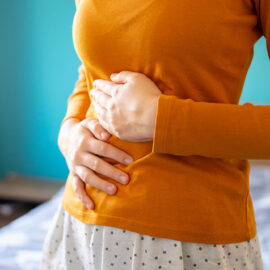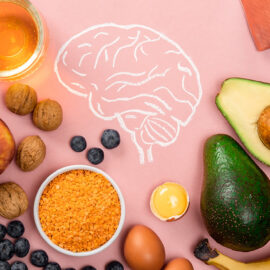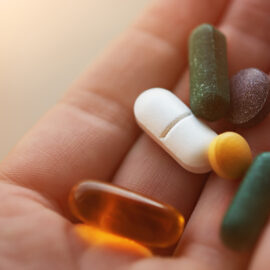Gastroparesis is a complex medical condition characterized by delayed gastric emptying of solid food in the absence of a mechanical obstruction of the stomach. Nausea, vomiting, early satiety, postprandial fullness, acid reflux, weight loss, and abdominal pain are common signs and symptoms of this chronic disorder. According to the International Foundation for Gastrointestinal Disorders, it is estimated that up to five million people in the United States have gastroparesis, while many remain undiagnosed. Evidence also suggests that gender-related differences are prominent in gastric motility functions and with gastroparesis, women appear to be more susceptible than men.1 However, the etiological connection remains a topic of further investigation.
In general, the pathophysiology behind idiopathic gastroparesis is varied and often depends on the disease etiology, which includes diabetes, postoperative causes and neuromuscular disease. While idiopathic gastroparesis is the most common form of gastroparesis, diabetic gastroparesis (DGp), a component of autonomic neuropathy resulting from long-standing unmanaged type 1 and type 2 diabetes, accounts for approximately one-third of all cases of gastroparesis.2
Since there is no cure for gastroparesis, the focus is on the treatment and alleviation of GI symptoms. Medical Nutrition Therapy (MNT), nutrition-based treatment provided by a registered dietitian nutritionist, and medication often play a large role. In 2013, The American College of Gastroenterology (ACG) issued clinical guidelines for the management of patients with gastroparesis, which include nutritional supplementation, pharmacological and surgical therapy and glycemic control for people with diabetes (PWD). These recommendations advise that oral dietary modifications be considered as a first-line therapy in individuals with mild gastroparesis.3 If MNT does not completely alleviate symptoms, medications may be added. If inadequate oral intake is present despite modifications in food consistency and concomitant medication, which is typical of severe gastroparesis, enteral nutrition via jejunostomy tube may be needed.
Considering the goal of maintaining oral nutrition and hydration, the role of Registered Dietitian Nutritionists (RDN) in the management of gastroparesis is imperative. RDNs administer medical nutrition therapy (MNT) with recommendations for fluid, foods, vitamin and/or mineral supplementation and oral nutrition support, if needed, to help prevent malnutrition and dehydration and correct electrolyte abnormalities. Since dietary tolerance and symptoms vary, nutrition interventions should be individualized to maximize nutritional benefits. MNT for gastroparesis usually focuses on strategies to optimize gastric emptying, such as small, frequent meals, 4-6 times per day. Since dietary fat and fiber tend to delay gastric emptying, a diet that is low in fat and fiber is advised. Foods high in fiber, especially nondigestible (insoluble) fiber, such as apples, Brussels sprouts, bran, nuts and seeds and legumes, should be avoided. High-fat solid foods should also be avoided, however, liquids that are rich in fat, such as nutritional shakes, may be tolerated and can support calorie and nutrient needs without exacerbating symptoms. Additionally, with DGp, glycemic management with diet and medication is often recommended. Other nutrition interventions to encourage symptom relief include chewing food well before swallowing and in this case, any dental concerns should be addressed. Sitting upright or walking for 1-2 hours after a meal may also help promote gastric emptying.
In an effort to support individuals suffering from idiopathic gastroparesis or DGp who are seeking cleaner nutrition as part of their oral diet or enteral nutrition feeding regimen, the Orgain 20g Clean Protein Shake, Orgain Protein Plant-Based Protein Powder and are great options as they can be a nutritious source of calories and protein as part of a therapeutic diet for gastroparesis. The 20g Clean Protein Shake provides 130 calories, 1-2g of dietary fiber, 9-11g of total carbohydrates and 2g of total fat per 11-ounce shake and the Plant-Based Protein Powder provides 140-150 calories, 4-6g of dietary fiber, 15g of total carbohydrates and 4-5g of total fat per serving. Since nutritional needs vary between individuals, further supplementation may be necessary, and tolerance may vary depending upon the severity of gastroparesis.
Healthcare Professionals continue to successfully use Orgain products for patients with gastrointestinal (GI) disorders, and here is one of the many testimonials shared with us:
“As an outpatient digestive health dietitian, I see a lot of patients who are underweight or undernourished due to difficulty eating given their individual digestive health issue. Orgain has been a lifesaver for many of these patients. I have found especially in my gastroparesis patients that Orgain is well tolerated and effective for not only supplying needed nutrients but calories and protein in a convenient and tasty manner.” – Nancee Jaffee, MS, RDN, Digestive Diseases Dietitian
Check out the following resources to learn more about gastroparesis and help spread awareness:
American College of Gastroenterology: https://gi.org/topics/gastroparesis/
International Foundation for Gastrointestinal Disorders: https://aboutgastroparesis.org/common-questions-about-gastroparesis.html
National Institute of Diabetes and Digestive and Kidney Diseases: https://www.niddk.nih.gov/health-information/digestive-diseases/gastroparesis/symptoms-causes
1 Gangula, P.R.R., et al. Digestive Diseases and Sciences. 2011. Sep; 56(9): 2520-2527. doi: 10.1007/s10620-011-1735-6
2 Krishnasamy, Sathya, et al. Diabetes Ther. 2018; Jul; 9(Suppl 1): 1-42; doi: 10.1007/s13300-018-0454-9
3 Camilleri, Michael MD, et al. The American Journal of Gastroenterology. 2013; 108(1): 1-42; doi: 10.1038/ajg.2012.373



